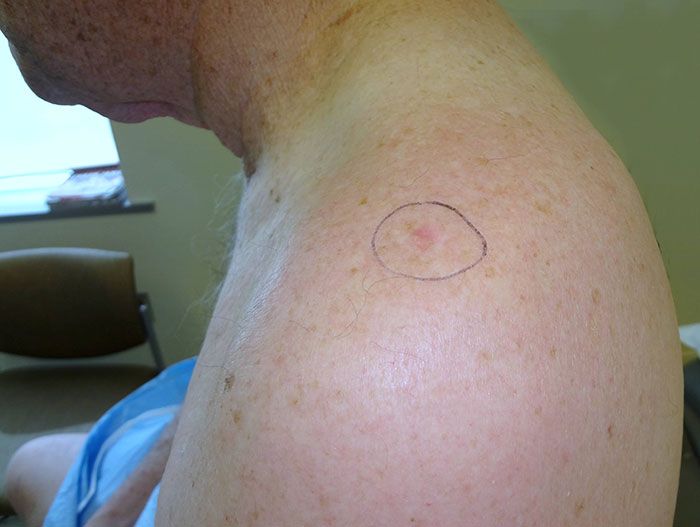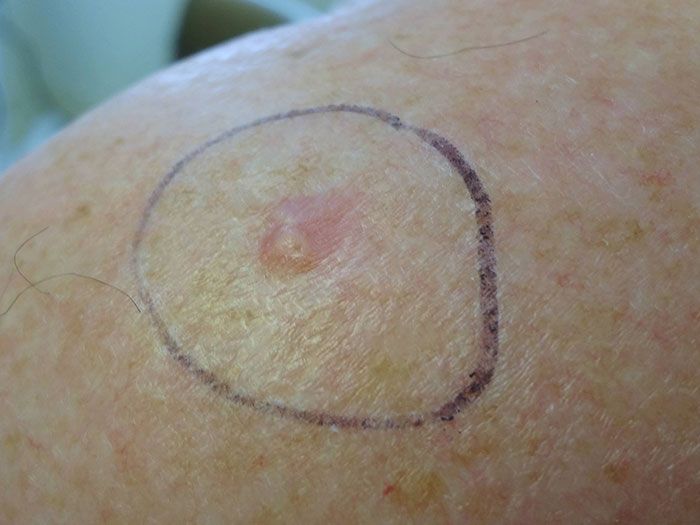Basal Cell Carcinoma-Superficial and Infiltrating
Biopsy of the flat area of this erythematous patch revealed superficial basal cell carcinoma while biopsy of the more nodular component revealed deeply infiltrating basal cell carcinoma.
A 71-year-old man was concerned about a “red spot” on the shoulder. His history included multiple non-melanoma skin cancers, malignant melanoma, and non-Hodgkin lymphoma.
Key point: From across the examination room, a 2.5-cm2 erythematous patch was visible. However, on close examination, a translucent nodule was located within this red patch. Biopsy of the flat area revealed superficial basal cell carcinoma, but biopsy of the more nodular component revealed deeply infiltrating basal cell carcinoma.
Treatment: Because of the invasive component, the entire lesion was removed via Mohs micrographic surgery.
Note: Some basal cell carcinomas have more than one histologic component. Treatment is dictated by the most aggressive portion of the lesion detected on biopsy.

